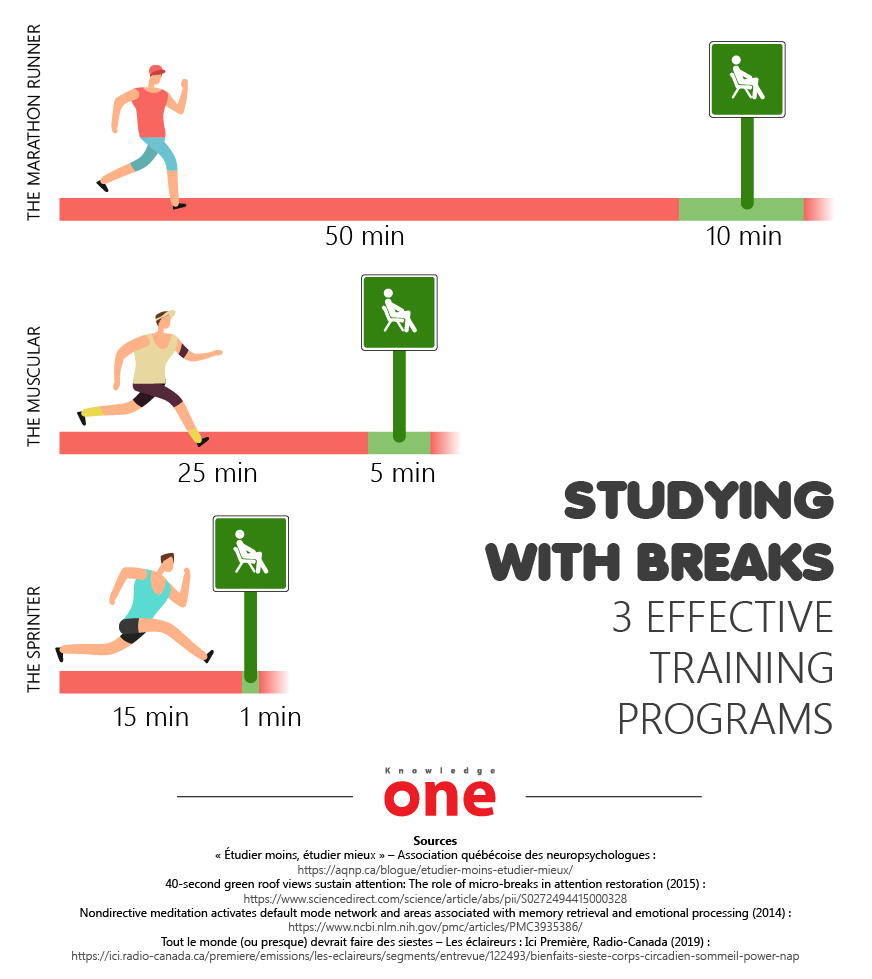Studying is good, but studying with breaks is better! Like our muscles in physical training, the brain functions optimally if its working moments are judiciously combined with rest periods. And neuroscience has recently confirmed this. Since learning needs vary from one learner to another or even from one time to another in the same learner, according to various factors (age, learning objective, availability, etc.), here are three “training” programs for optimal learning. Each of these programs can be repeated as often as necessary or followed alternately with another.

Making the most of your breaks
To get the most out of a break, it is essential to unplug! To achieve this, we must first respect the rest period we have set for ourselves. Because resting is serious, don’t hesitate to use a timer! Various timers are available online.
In order to help your brain’s hard drive “defragment,” the activity chosen must be enjoyable, regenerating, and entertaining. Nature or something that evokes it seems to be particularly appropriate, as well as the fact of moving, listening to music, meditating, letting oneself daydream, or even taking a power nap!
Sleep plays a key role in learning (see Neuroscience: Learning in 4 steps) — a lack of sleep can cause you to lose 20 to 30% of your cognitive abilities — so a nap is not an option to be neglected. However, it should only last 15 to 20 minutes, and the most beneficial time to do so is around 2 p.m., a time of day that corresponds to a circadian low.
On that note, good training!






